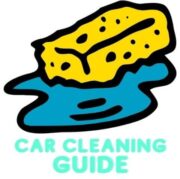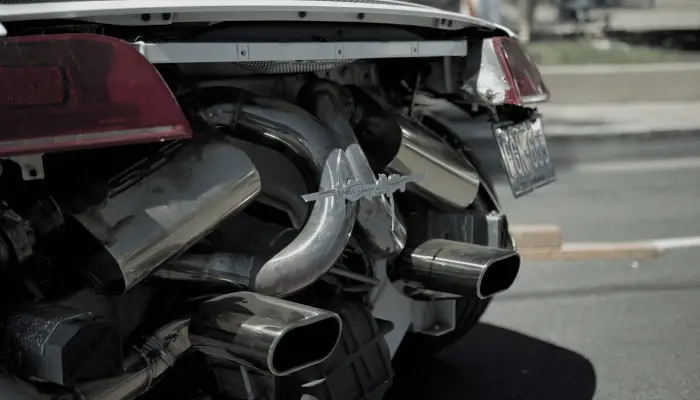- How to Clean Car Carpets Quick and Easy - July 10, 2024
- Can You Touch Up Clear Coat? Yes and No (Here’s Why) - November 25, 2023
- How To Wax A Car By Hand: A Comprehensive Guide - November 14, 2023
Last Updated on September 5, 2023 by Chase Manhattan
In short, you can clean your exhaust system in a few steps but there are a few necessary steps to take to protect your exhaust pipes in the process and ensure that the exhaust system stays protected for the foreseeable future.
Since a car’s exhaust receives the most exposure to dirt, dust, and road residue, this is an important component of maintaining your car’s undercarriage over time.
Additionally, when cleaning any exhaust pipe, you’ll want to have the vehicle turned off so you’re not inhaling harmful fumes, like carbon monoxide or carbon dioxide, from the exhaust system.
Lastly, you’ll want to make sure that each exhaust pipe has had time to cool so you don’t get burned by any lingering heat. The most essential part of any procedure will always be safety.
Here’s a quick step-by-step to clean your exhaust system:
- wash with soap and water
- thoroughly apply degreaser
- scrub with wash mitt or steel wool
- apply metal polish
- buff until clean
This is only a brief description of cleaning your pipes. Keep reading for a step-by-step guide on how to clean each piece of the exhaust system; including cleaning the exhaust tips, the mid-pipes, headers, and the muffler.
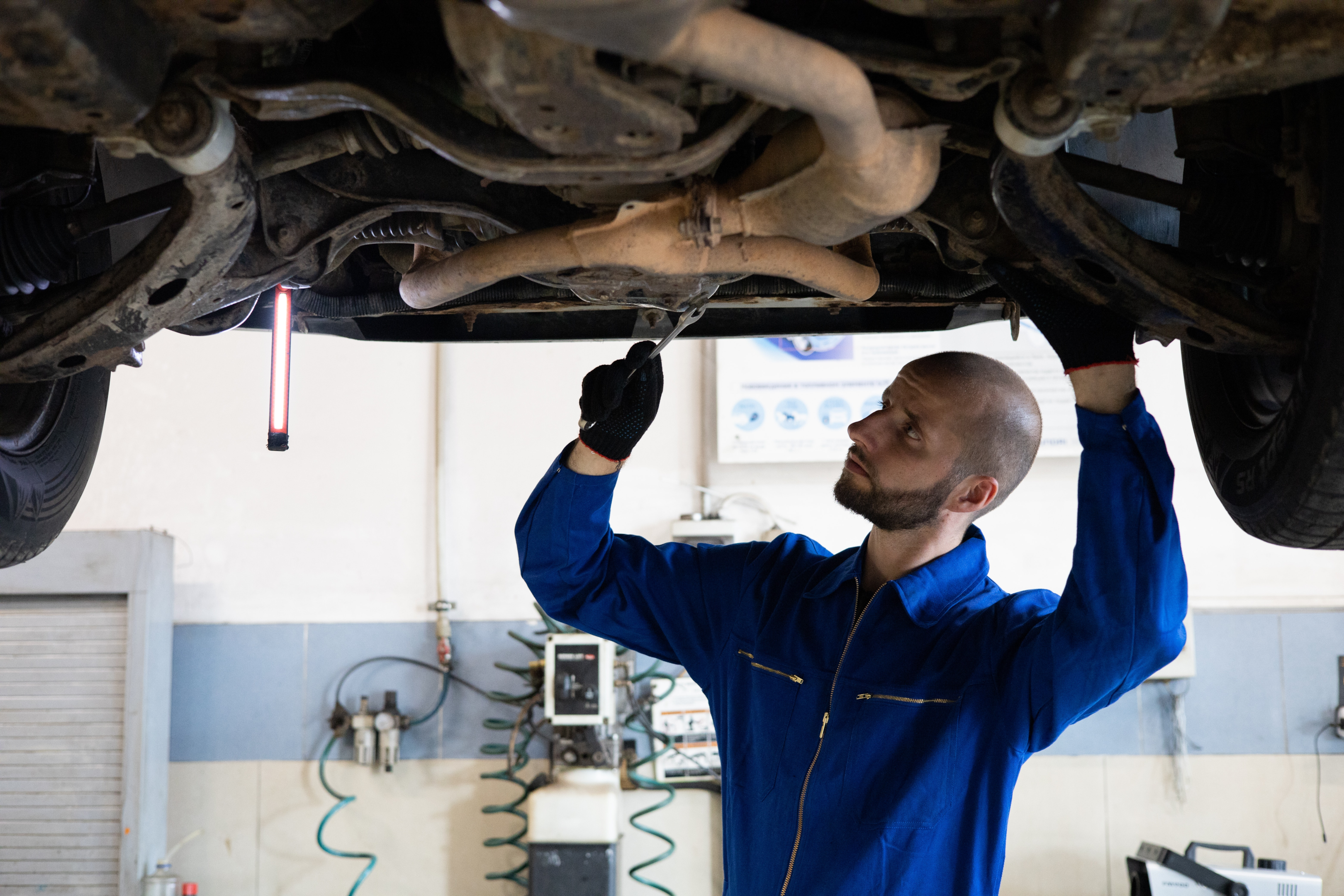
[How to Stop Rust Bubbles from Spreading]
Quick Navigation
How To Clean Your Exhaust System
First, I’m going to cover the general process for cleaning your entire exhaust system. As we move through the guide, I will address each piece individually. This section, in particular, will be an expansion of the brief guide given above.
As a reminder, always turn your car off and allow it to cool before cleaning your exhaust system. Additionally, this will prevent exposure to harmful fumes like carbon dioxide and carbon monoxide.
Wash and Rinse the Exhaust
The first step is to clean the entire exhaust system with soap and water. You specifically want to remove any caked-up dirt or road grime that has accumulated underneath the car. If you neglect this step, your exhaust system is like to be quickly recontaminated with dirt.
Apply a Degreaser
Thoroughly spray a high quality degreaser or wheel cleaner across the entire exhaust system, but be sure to read the manufacturer’s use instructions as some will recommend using small quantities as opposed to an excess. Allow it to soak for the suggested time per the bottle. Using an old rag, hard bristled brush, or steel wool, scrub the surface until all brake dust, engine debris, and carbon buildup has been removed.
Read next: Best Undercarriage Cleaner
Apply Automotive Safe Metal Polish
Now, we will apply a metal polish to remove any imperfections in the surface. Additionally, if the exhaust system has begun to develop rust, this step of the process will remove any remnants that may be present.
Buff Until Clean
Using a clean microfibre cloth, polish the exhaust system until all imperfections and leftover materials have been removed.
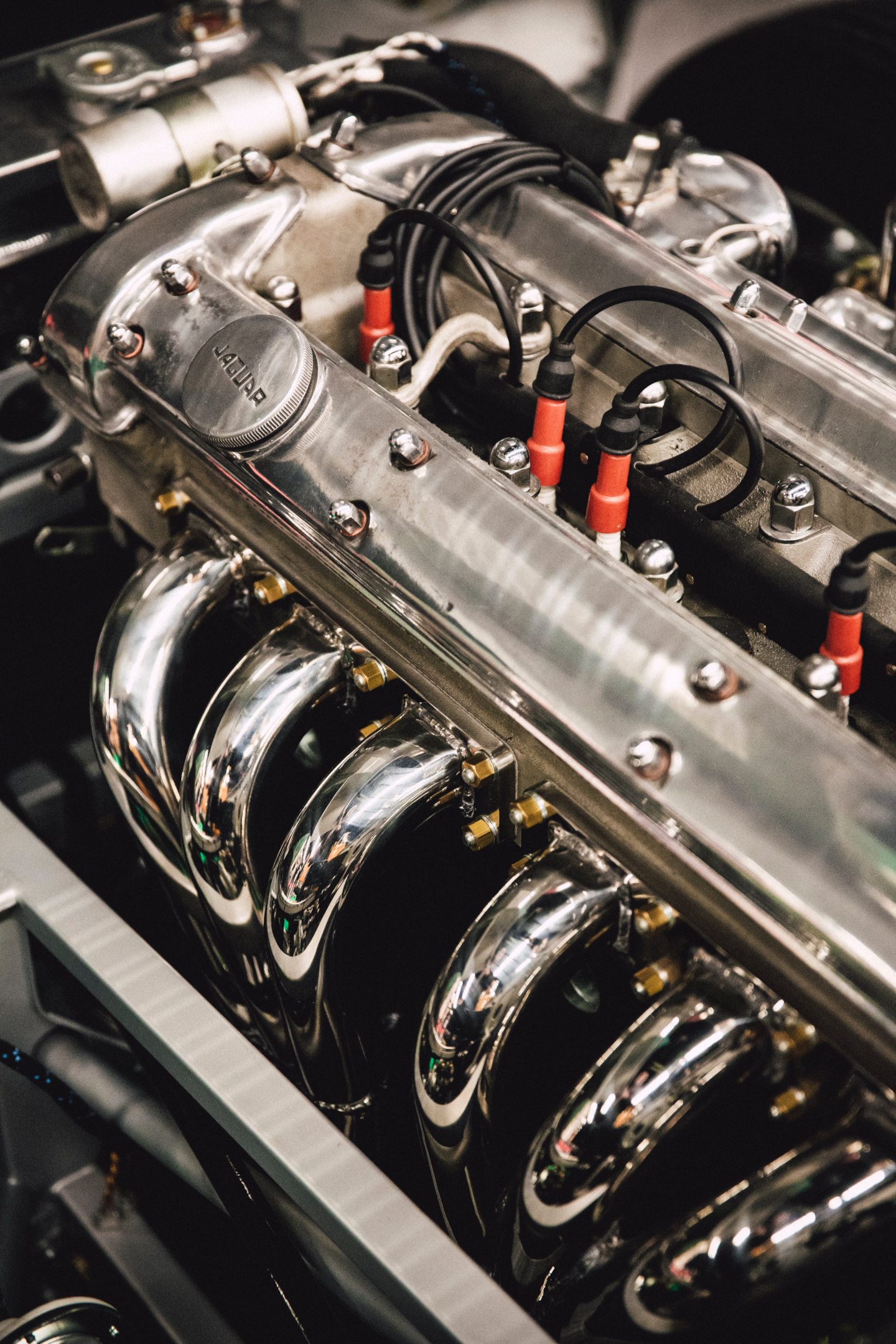
How To Clean The Exhaust Manifold
Unfortunately for DIYers like you and I, cleaning an exhaust manifold is a bit of an involved process; however, it’s valuable knowledge to have in your detailing arsenal.
Keep reading to learn how to clean your exhaust manifold.
Remove the Manifold
Given the exhaust manifold is housed inside the engine bay, it’s typically very difficult to reach and clean properly. With this being the case, we will need to remove the exhaust manifold from the engine in order to clean it.
Each car is different, so I recommend that you read a Haynes manual prior to doing so. If you’re mechanically savvy, proceed at your discretion. Just be sure to look out for any exhaust manifold gaskets that may be attached after removal.
Wash and Rinse the Manifold
Following our general trend thus far, your first cleaning step will be thoroughly cleaning the manifold with soap and water. Ensure that all dust and dirt has been adequately removed prior to continuing to the next step.
Apply a Degreaser
Using a high quality degreaser or wheel cleaner, apply it to the exhaust manifold and allow it to sit per the time specified on the bottle.
Use a steel wool or hard bristled brush to remove any stuck on carbon deposits or potential oil stains from the engine.
Use Metal Polish as Desired
To restore the manifold’s shine, our next step is to apply an automotive safe metal polish. You can apply the polishing compound to a foam pad, a microfibre cloth, or an old rag. Proceed to buff scratches and imperfections until satisfied.
Dry Thoroughly
An outlier to previous steps, be sure to dry the manifold thoroughly before reinstalling it. Since the manifold will be close to other critical components in the engine bay, we do not want to create excess steam and heat.
[How To Clean a Purge Valve Solenoid]
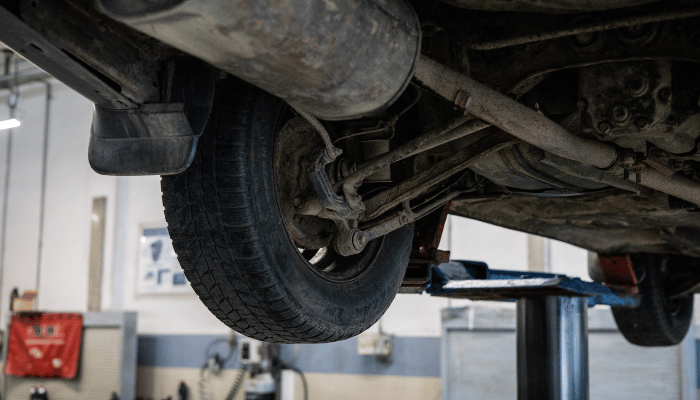
[Why You Shouldn’t Drive With a Bad Purge Valve]
How To Clean Exhaust Pipes
Here we’re specifically referring to exhaust pipes as the parts of the exhaust system between the exhaust manifold and the muffler. In other terms, this will be the part of the car where you’ll find the downpipes and the catalytic converter.
Lift the Car
To successfully complete this portion of the exhaust system, we will need to adequately lift the car to where we can get underneath it, both alone and with our equipment.
If you have a 4-point lift, proceed as usual; if you’re going to jack the car up by hand, be sure to use jack stands for safety.
Clean and Rinse Well
Using a garden hose or pressure washer, thoroughly clean the exhaust pipes. Be sure to remove any dirt, dust, or engine debris while you’re under the car.
Use soap and water or a high-quality car soap and wash mitt. Use a bucket to hold the soap if you plan on taking multiple passes.
Apply Degreaser
Thoroughly coat the exhaust pipes in a high quality degreaser, all purpose cleaner, or wheel cleaner. Let the cleaning solution sit for the designated time shown on the bottle. At this time, you can use steel wool or a dirty microfibre cloth to agitate the area. Agitate until the remaining degreaser has dissolved.
Apply Rust Inhibitor
Since the exhaust pipes are most frequently exposed to the harsh elements of the road, I recommend you finish up this process with an application of WD40 or a suitable alternative to seal the work you’ve done and prevent rust from developing in the future.
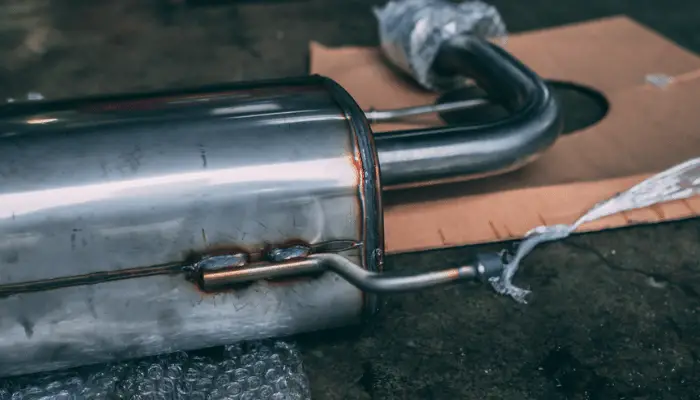
[How to Fix a Sunroof That Won’t Close]
How To Clean a Muffler
As a fore note, we’re now moving into the more visible parts of the car’s exhaust system. When cleaning the tailpipe, or technically known as the muffler, I suggest that you take extra care when doing so, as any blemishes will be readily available to be seen.
Clean and Rinse Well
Use the two-bucket method when cleaning the muffer. If you’re unfamiliar, you will use one bucket to hold your soap and water mixture and a separate bucket to rinse your mitt.
Use a Degreaser
Use a high quality degreaser or all purpose cleaner to loosen the buildup on the underside of the tail pipe. If you have a standard stainless steel or aluminum tail pipe, you can use steel wool for additional abrasion or you can use a microfiber towel for a more conservative approach.
Use Metal Polish as Desired
Again, since the tail pipe is visible, I recommend applying some automotive metal polish to round off your work. The polishing compound will remove any blemishes or scratches that may have developed during the cleaning process.
[How To Wax a Car With a Buffer]
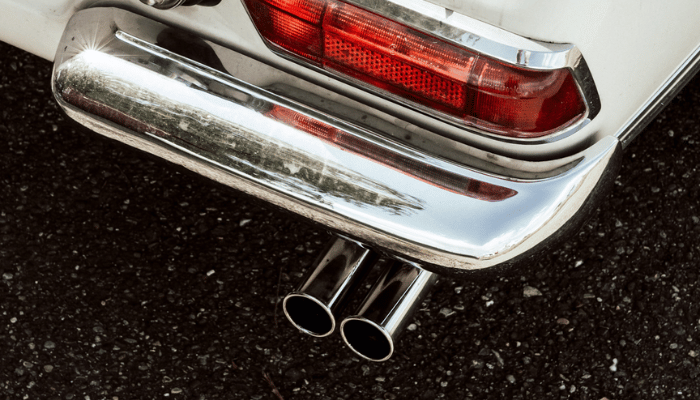
[The Right Way to Remove Swirl Marks]
How To Clean Exhaust Tips
Fortunately for us, it’s the easiest to clean exhaust tips when compared to any other exhaust pipe. Follow the instructions below to clean your dirty exhaust tips, but be mindful if your car’s exhaust tips are covered in carbon fiber or chrome bumpers, as these finishes can be marred if you’re not careful.
Otherwise, I recommend paying attention to the areas around each exhaust tip as they are more prone to developing carbon build up.
Rinse The Exhaust Tips
Thoroughly clean the exhaust tips to remove any loose contaminants and carbon build up. If you have exhaust tips protected by a chrome or carbon fiber shield, do not spray them directly with a pressure washer.
Additionally, do not use a steel wool or other abrasive materials on an exhaust tip covered in chrome or carbon fiber.
Apply a Degreaser
Apply a high quality degreaser or wheel cleaner and allow it to soak for the allotted time as specific on the bottle. For stainless steel exhaust tips, or an aluminum exhaust tip, use a steel wool or dry cloth to agitate the degreaser. It is also an option to use a hard bristled brush to remove carbon deposits in hard to reach areas.
Apply Metal Polish as Desired
By applying metal polish to the surface we are removing any present rust, small scratches, or blemishes from the surface of the exhaust tips. This is the essential part of the procedure as dull or dirty exhaust tips can significantly detract from the appearance of your car.
Buff Until Clean
Using a clean microfiber cloth, polish the exhaust tips in circular motions until you’re satisfied with the shine.
